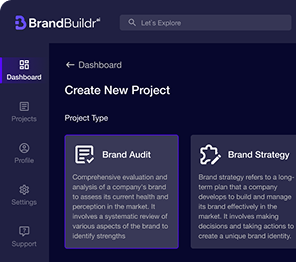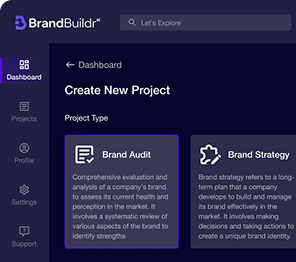In recent years, sustainability has become a key consideration for both consumers and businesses. As environmental concerns grow, e-commerce brands are being challenged to adopt eco-friendly practices to reduce their carbon footprint and meet the demands of conscious consumers. Building a sustainable online store is not just about minimizing environmental impact — it's also about creating long-term value, gaining customer loyalty, and ensuring ethical business practices.
This article will explore strategies for making your e-commerce business more sustainable and provide actionable tips to help you create an eco-friendly online store.

1. Understanding the Importance of Sustainability in E-commerce
Sustainability in e-commerce refers to adopting environmentally friendly practices that minimize the negative impact on the environment while running an online business. This includes everything from reducing waste and carbon emissions to promoting ethical sourcing and manufacturing processes.
The Consumer Demand for Eco-Friendly Options
More consumers are now choosing brands that align with their values, particularly when it comes to sustainability. A Nielsen study found that 73% of global consumers are willing to change their purchasing habits to reduce their environmental impact. In response, businesses that adopt green practices are more likely to win over environmentally conscious consumers.
Regulatory and Financial Incentives
Beyond consumer demand, businesses are also facing increasing pressure from governments and regulators to implement sustainable practices. Many countries are implementing stricter environmental regulations, such as carbon taxes, which affect how businesses operate. Companies that adopt sustainable practices early can benefit from regulatory incentives and avoid penalties.
2. Sustainable Product Sourcing and Manufacturing
One of the first steps toward building an eco-friendly online store is to ensure that the products you sell are sustainably sourced and manufactured. Sustainable product sourcing involves using materials and resources that have a minimal impact on the environment and ensuring that ethical labor practices are followed throughout the supply chain.
Choosing Eco-Friendly Materials
Sourcing products made from eco-friendly materials, such as organic cotton, bamboo, recycled plastics, or biodegradable materials, can significantly reduce your environmental impact. You should also look for suppliers that practice sustainable farming, forestry, and mining to ensure the raw materials used in your products are obtained in an environmentally responsible manner.
Ethical Manufacturing Practices
It’s essential to partner with manufacturers who follow ethical and sustainable practices. This includes using energy-efficient production methods, reducing waste, and adhering to fair labor standards. By doing so, you can ensure that your products are not only eco-friendly but also socially responsible.
Certifications and Labels
Using third-party certifications like Fair Trade, FSC (Forest Stewardship Council), or GOTS (Global Organic Textile Standard) can help validate your sustainability claims. These certifications demonstrate that your products meet recognized standards for environmental and social responsibility, which can enhance your brand's credibility.
3. Sustainable Packaging Solutions
One of the biggest environmental challenges in ecommerce is packaging waste. With the rise of online shopping, there has been a significant increase in packaging materials like plastic, cardboard, and bubble wrap, much of which ends up in landfills.
Eco-Friendly Packaging Options
Switching to eco-friendly packaging materials is a critical step in building a sustainable online store. Some options include:
- Biodegradable or compostable materials such as cornstarch-based packaging, mushroom packaging, or biodegradable mailers.
- Recycled and recyclable materials like cardboard, paper, or recycled plastic.
- Minimalist packaging designs that reduce the overall amount of material used.
Encouraging Reuse and Recycling
Encourage your customers to recycle or reuse the packaging by providing clear instructions on how to dispose of materials responsibly. Offering incentives, such as discounts or loyalty points for returning or reusing packaging, can motivate customers to participate in your sustainability efforts.
%2520(1).avif)
Plastic-Free Initiatives
Whenever possible, avoid using single-use plastics in your packaging. Plastic takes hundreds of years to decompose, contributing to pollution and environmental degradation. Instead, opt for plastic-free alternatives or limit plastic use to essential components that can be recycled.

4. Energy-Efficient Operations and Green Shipping
Running an eco-friendly online store requires reducing your energy consumption and adopting sustainable shipping practices.
Energy-Efficient Websites and Hosting
Even your website can contribute to your overall environmental impact. Websites hosted on servers that rely on fossil fuels have a significant carbon footprint. Opt for green web hosting providers that use renewable energy to power their servers. Additionally, optimizing your website's design and performance can reduce the energy required to load and process pages, further minimizing its environmental impact.
Sustainable Warehousing
If you manage your own inventory, consider optimizing your warehouse to be energy-efficient. This can include using energy-efficient lighting (such as LEDs), improving insulation to reduce heating and cooling costs, and installing solar panels to power your operations.
Green Shipping Options
Shipping is another area where ecommerce businesses can reduce their environmental impact. Some sustainable shipping strategies include:
- Carbon-neutral shipping: Offer carbon-neutral shipping options by offsetting emissions through certified carbon offset programs.
- Consolidated shipping: Encourage customers to combine orders, reducing the number of deliveries and minimizing packaging waste.
- Local fulfillment centers: Partner with local fulfillment centers to shorten the shipping distance, reducing fuel consumption and emissions.
Many major shipping carriers, such as UPS and FedEx, now offer eco-friendly shipping options, so consider integrating these services into your store.

5. Circular Economy Initiatives and Product Lifecycle Management
Building a sustainable ecommerce business goes beyond the sale. Consider the entire lifecycle of your products, from production to disposal, and explore circular economy initiatives that keep products and materials in use for as long as possible.
Encouraging Product Longevity
One way to promote sustainability is by offering products that are durable, repairable, and designed to last longer. This reduces the need for frequent replacements and minimizes waste. Some brands offer repair services or sell replacement parts to extend the life of their products, which can also build brand loyalty.
Recycling and Upcycling Programs
Implementing recycling or upcycling programs allows customers to return used products for repurposing. For example, some fashion brands encourage customers to send back worn clothes, which are then recycled into new garments. Similarly, electronics companies may offer trade-in programs for old devices, recycling their components into new products.
Product Takeback Programs
A takeback program allows customers to return products after use, ensuring they are disposed of responsibly. This can be particularly effective for businesses selling electronics, furniture, or clothing, where improper disposal contributes to environmental damage.

6. Educating and Engaging Your Customers
Sustainability is not just a marketing tactic—it’s a core value that should resonate with your customers. By educating and engaging them on your eco-friendly initiatives, you can foster a loyal customer base that supports your efforts to make a positive environmental impact.
Transparency and Communication
Be transparent about your sustainability efforts by sharing your goals, progress, and challenges with customers. Include information on your website about your sourcing practices, packaging materials, and carbon footprint reduction strategies. Customers appreciate honesty, and transparency builds trust.
Storytelling and Brand Narrative
Craft a compelling narrative around your sustainability efforts. Share stories about how your products are made, the environmental impact you're reducing, and the people or communities benefiting from your eco-friendly practices. This storytelling approach humanizes your brand and connects with consumers on an emotional level.
Incentivizing Sustainable Behavior
In addition to offering eco-friendly products, consider incentivizing customers to adopt sustainable behaviors. For example, offer discounts for bulk orders (which reduce shipping emissions), or encourage customers to participate in recycling programs by providing loyalty points or vouchers for returning used products.
7. Measuring and Reporting Your Sustainability Impact
Tracking and measuring your sustainability efforts is essential to understanding your impact and continuously improving your practices.
Carbon Footprint Tracking
Several tools and services are available to help businesses track their carbon footprint across various areas, such as energy use, shipping, and waste. Understanding your carbon footprint allows you to set tangible goals for reducing emissions and improving sustainability.
Sustainability Audits
Regular sustainability audits can identify areas of your business that may need improvement. These audits assess your environmental impact and help you implement more eco-friendly practices.
Reporting and Certifications
Consider publishing annual sustainability reports that outline your goals, achievements, and areas for growth. Obtaining certifications, such as B Corp, Cradle to Cradle, or LEED (Leadership in Energy and Environmental Design), can further validate your commitment to sustainability.
Sustainability in e-commerce is not just an option; it’s a responsibility. By embracing eco-friendly practices, we can build a future where both businesses and the planet thrive.
Conclusion: Building a Sustainable Ecommerce Future
The future of ecommerce lies in sustainability. As environmental concerns become more pressing, businesses must embrace eco-friendly practices to remain competitive and meet the expectations of a growing population of environmentally conscious consumers. By focusing on sustainable product sourcing, eco-friendly packaging, energy-efficient operations, and customer engagement, ecommerce businesses can reduce their environmental impact while building a loyal and supportive customer base.
Ultimately, creating a sustainable online store is not just about minimizing harm—it's about contributing to a future where both businesses and the environment thrive together. Sustainable ecommerce practices will not only help protect the planet but also foster long-term business success, aligning ethical values with profitability.
Heading 1
Heading 2
Heading 3
Heading 4
Heading 5
Heading 6
Lorem ipsum dolor sit amet, consectetur adipiscing elit, sed do eiusmod tempor incididunt ut labore et dolore magna aliqua. Ut enim ad minim veniam, quis nostrud exercitation ullamco laboris nisi ut aliquip ex ea commodo consequat. Duis aute irure dolor in reprehenderit in voluptate velit esse cillum dolore eu fugiat nulla pariatur.
Block quote
Ordered list
- Item 1
- Item 2
- Item 3
Unordered list
- Item A
- Item B
- Item C
Bold text
Emphasis
Superscript
Subscript





















.avif)



.avif)

.avif)


